Microlearning
Microlearning is short, targeted, and direct learning experiences that focus on specific content. It breaks down the material into pieces, facilitating the attention and the completion of the learning goals.
As the Ebbinghaus Forgetting Curve demonstrates, people typically lose 80% of the knowledge they learn within a month. Splitting the content into small pieces and recalling different parts of it over time can help improve knowledge retention and productivity.

In my experience designing and facilitating Professional Development training sessions for teachers, I like the idea of using the Microlearning concept. I recently created a 1 hour training for k-12 educators. The learning goal was to provide expectations, structure and strategies for small groups activities in Elementary Education.
The session was interactive but I see now how this session could have been divided in smaller learning objectives and share with the educators in a Microlearning format. I will show you how.
Minicourse for Education K-12
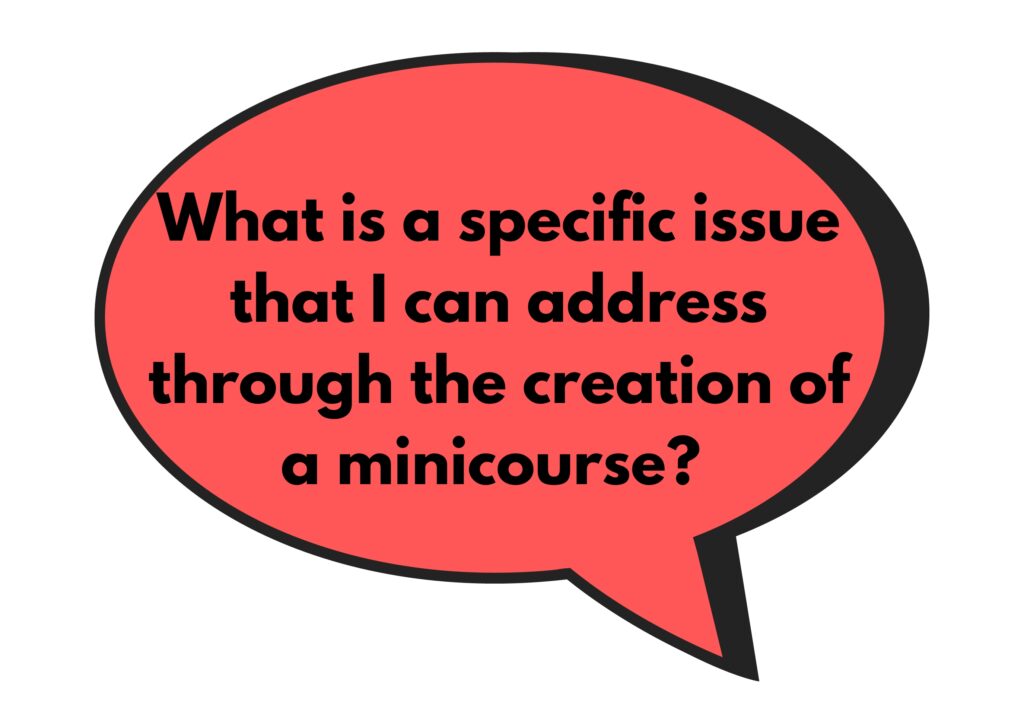
In the last two years in Education K-12, we have seen how the gaps in Literacy and Math have been increasing due the interruption in Education during the pandemic. In addition to those academic gaps, we have seen how challenging behaviors increased, being more and more difficult the whole group instruction in an Elementary Classroom.
Based on the data, I have decided to design and facilitate a Professional Development training for educators and paraprofessionals to focus on small group instruction to address academic gaps in Literacy and challenging behaviors.
Small group instruction has been proved to be an effective method to differentiate in a classroom, addressing individual needs and focus on the teaching of skills needed to decrease that gap.
Teachers and Paraprofessionals will have a clear understanding of the purpose, expectations, structure and strategies for design and facilitate Small group instruction to Elementary students.
The 3 learning modules of the minicourse are:
- Characteristics of small group instruction.
- Purpose
- Benefits (small versus whole group instruction)
- Structure
- Expectations for small groups at your school.
- Occurrence in your schedule.
- Collaboration with Paraprofessional and Interventionist.
- Data collection.
- Materials and lesson plans.
- Explicit learning objective.
- Strategies for small group instruction.
- Cooperative learning.
- Peer evaluation.
- Independent practice.
- Teach explicit strategies.
- Reflection on student’s results.
- Create individual goals.
- Use of visuals and manipulatives.
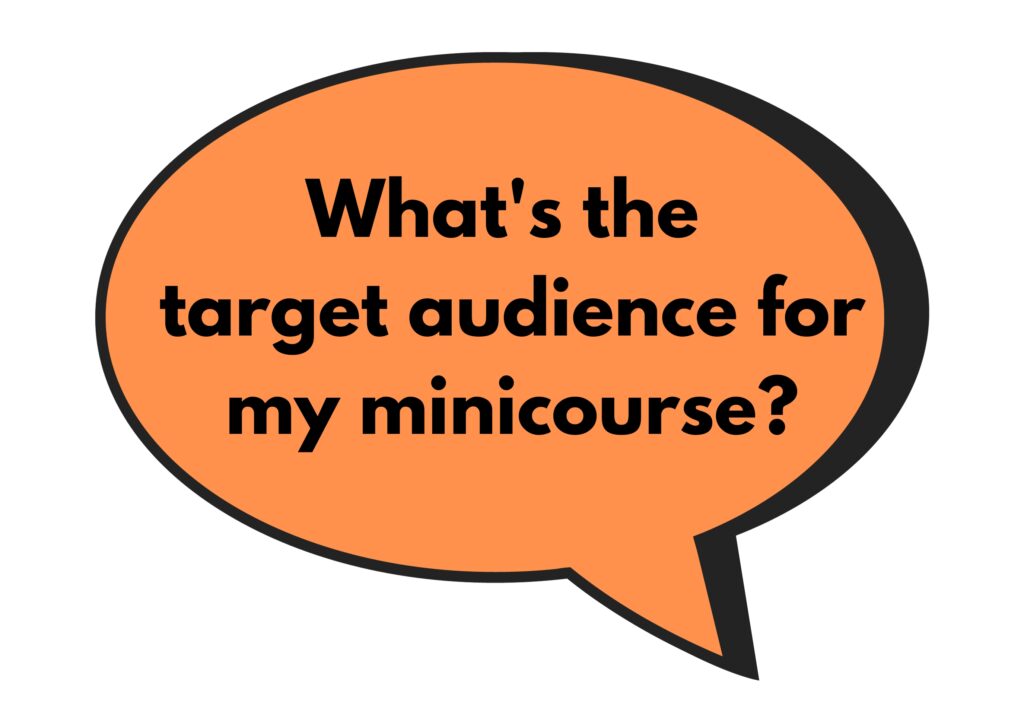
The target audience of the minicourse will be educators (teachers, paraprofessionals and Interventionist) that are working with Elementary students from Kinder to 5th grade. At my current school we have a total of 25 adults.
The minicourse will last three weeks extended during the first semester of the school year. Each week, the whole school will focus on one of the three modules and Instructional coaches will base their observations and feedback on those objectives.
The leadership team will collect data from observations and feedback conversations to find patterns and decide best supports for the small group implementation school wide. This would be a good way to have feedback about the minicourse and plan the necessary updates based on success and needs of the educators.
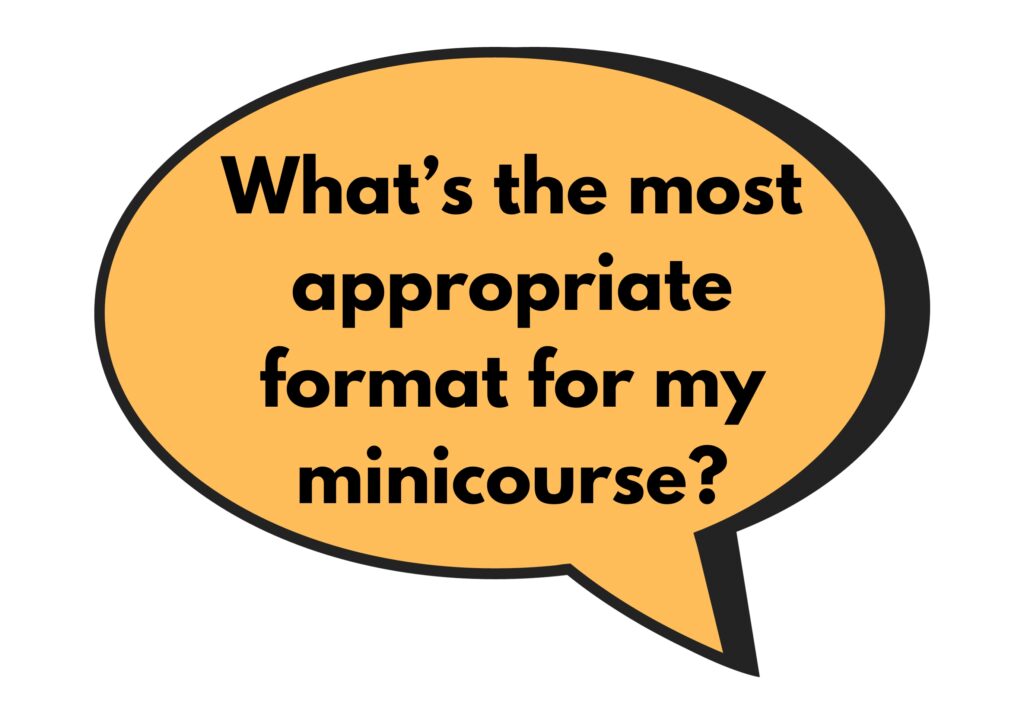
The minicourse modules will have an online asynchronous format. All the educators will receive one module each week. Each module will last 10 minutes and it will incorporate different interactive elements (own path to complete the content, true/false and 4 options knowledge check, forum discussions).
The modules will be available for teachers so they can review it at any time. They could access from their computers or phones using the Schoology Learning platform. The educators and coaches will also have additional resources:
- Videos with practical examples.
- Observation checklist for teachers and coaches.
- Printable templates for lesson plans.
- One-page printable infographic with the most important information of each module summarize.
- Pear Deck to share notes and give feedback about the learning of the modules.
In addition to the online asynchronous format, the educators will have a weekly in-person follow-up session with Instructional coaches to ask questions, clarify content and support individual needs.
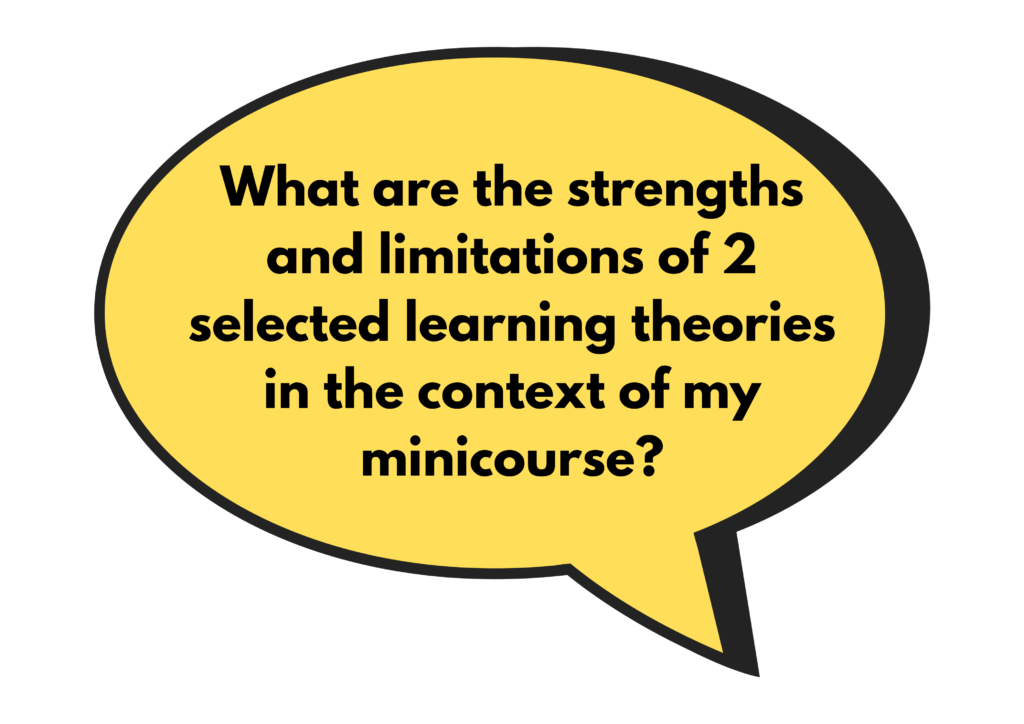
After reviewing all the Learning Theories studies in the last weeks, I have selected Connectivism and Andragogy as the main theories that could effectively drive the minicourse considering the audience and the content.
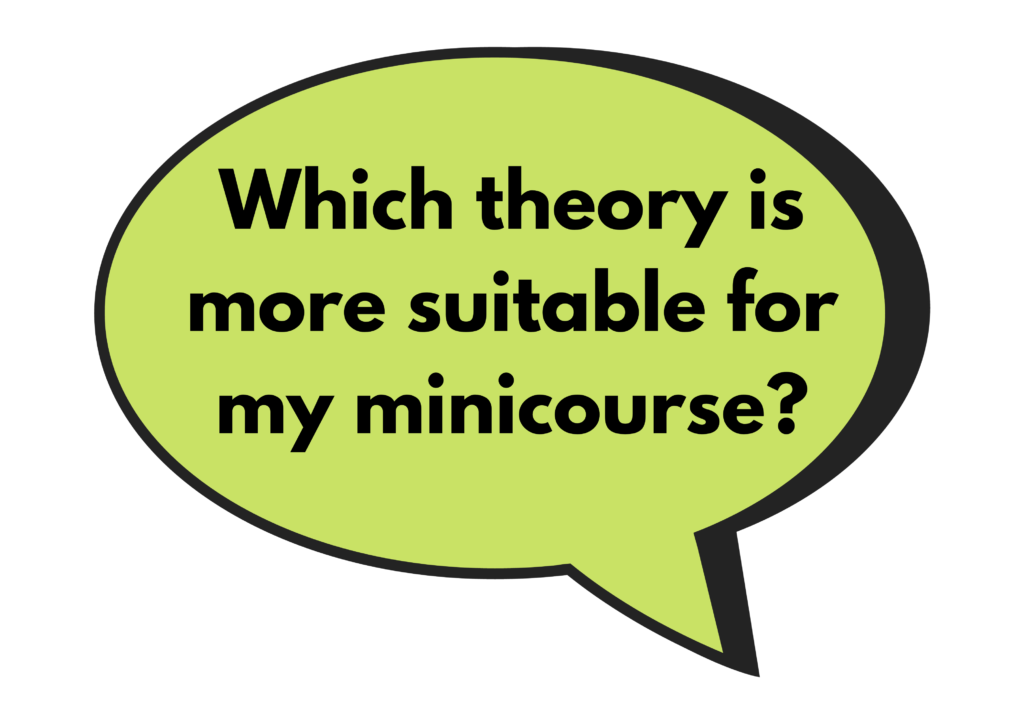
After analyzing both theories, I confirm that the Andragogy theory could be more suitable for my minicourse. However, the learning experience could also include some aspects of the Connectivism too.
To increase the motivation and engagement of the teachers with learning objectives not created by them, the minicourse could offer different choices of content so teachers can create their own learning path. If I also incorporate some collaboration with other educators through Online Learning Communities from Connectivism, it could also impact on motivation and engagement.
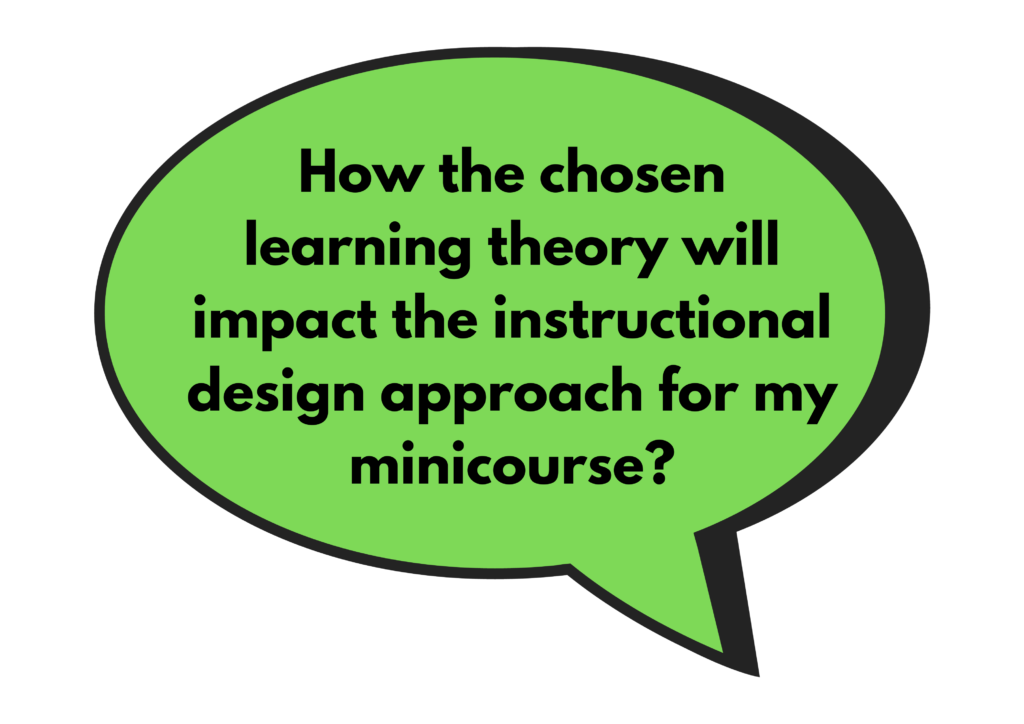
The instructional designer will apply the Knowles’ principles based on the Andragogy theory to create an engaging and interactive learning experience, in addition of some considerations for collaboration from Connectivism.
- Previous learning: As a pre-work, teachers who need it will be trained in Digital Literacy skills and all teachers will attend a session about Security and Privacy Data.
- Promote autonomy: The learning modules will be self-paced, allowing adult learners to choose the order of the contents and chart the progress.
- Create collaborative opportunities: The instructional designer will encourage online group discussions, peer feedback and knowledge sharing in each module using the Schoology and Pear Deck apps. The instructors will also encourage the creation of an Online Learning Community for the school district to include educators from different schools. Social Media sharing will also be encourage following the Security Data Privacy protocols at all time. In-person feedback conversations and coaching will also be available weekly with the Instructional coaches.
- Align content with real-world relevance: the minicourse will incorporate real-world case studies, simulations, and practical scenarios. All the content will have immediate application in the classrooms.
- Provide flexibility and choice: the minicourse will offer both online asynchronous and in-person synchronous learning sessions. In addition, it will offer a variety of learning resources, such as video examples, interactive activities, and written materials.
Finally, the minicourse could also incorporate some strategies of Gamification as a Learning Model. The instructional designer could create a scenario with a small group of 6 students and will follow them and apply all the new content and strategies to maximize their learning. The educator will gain points if she is able to apply the right strategies and structure of the small group instruction.